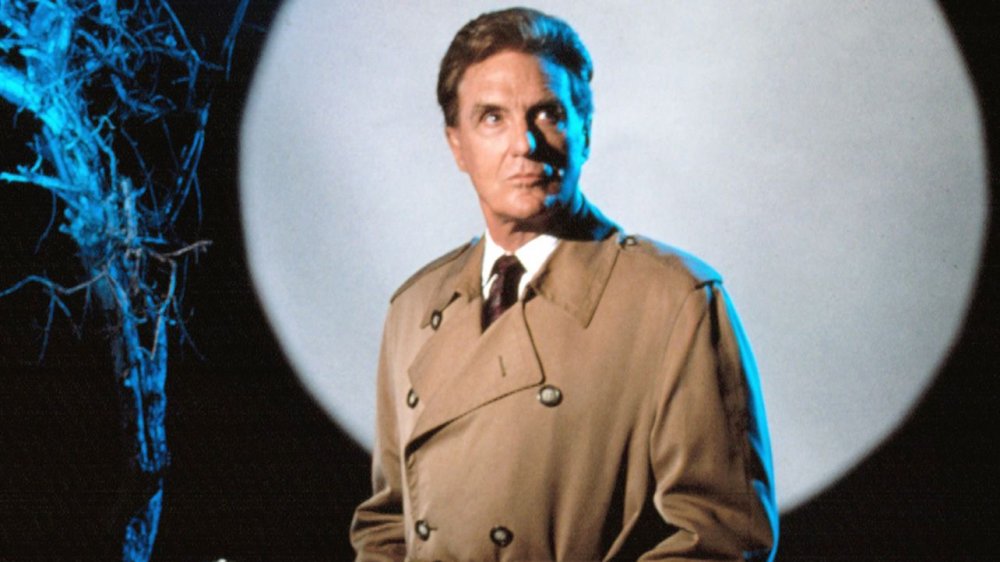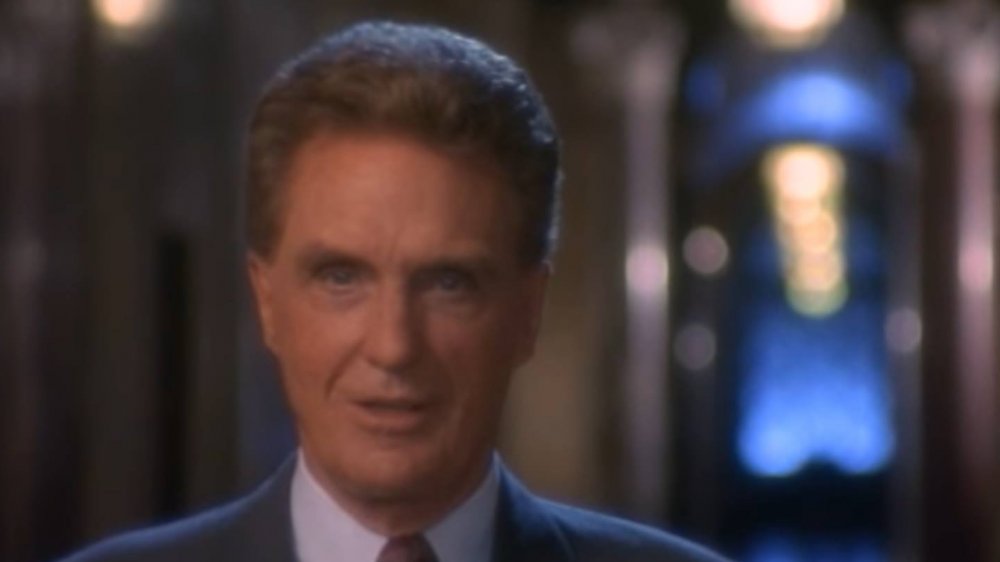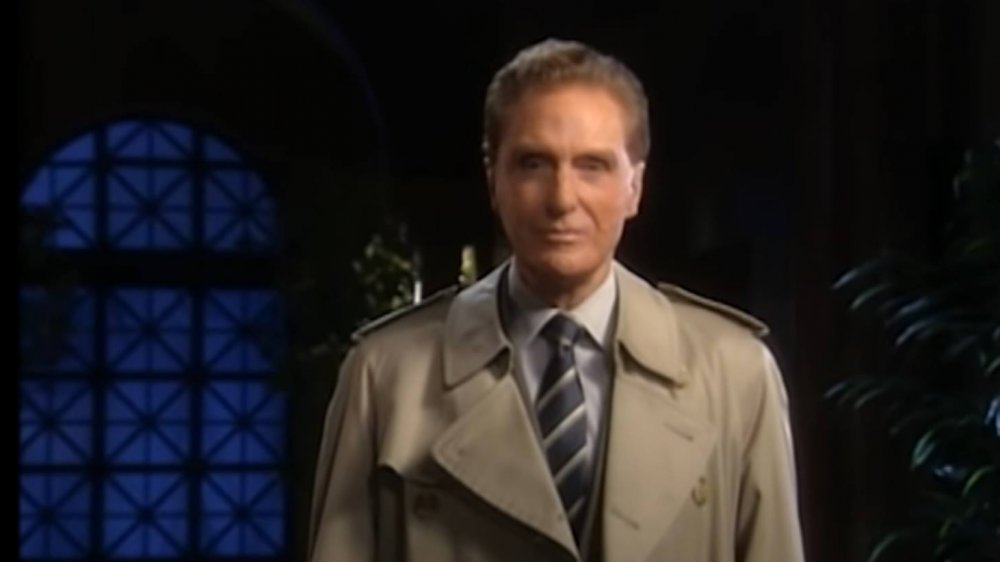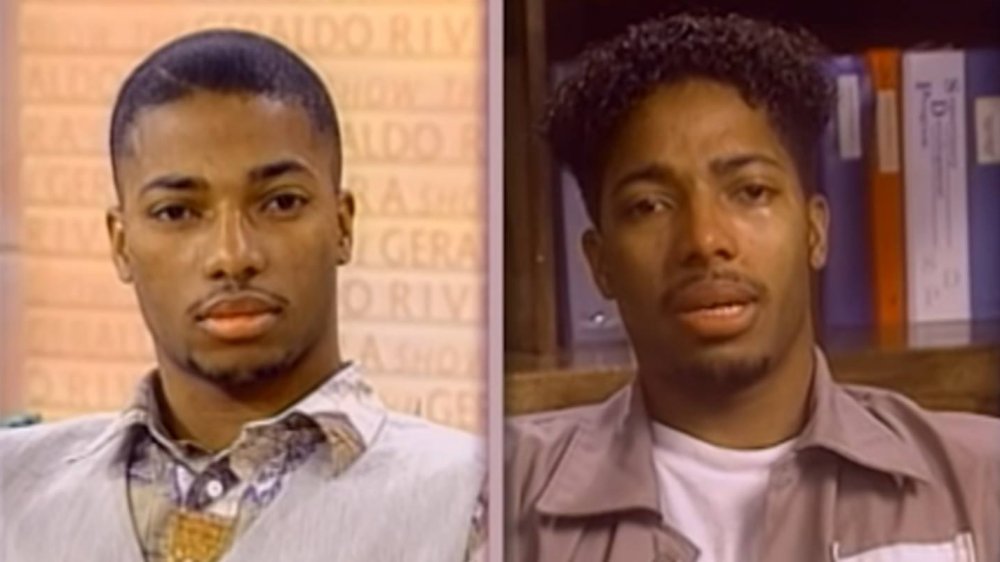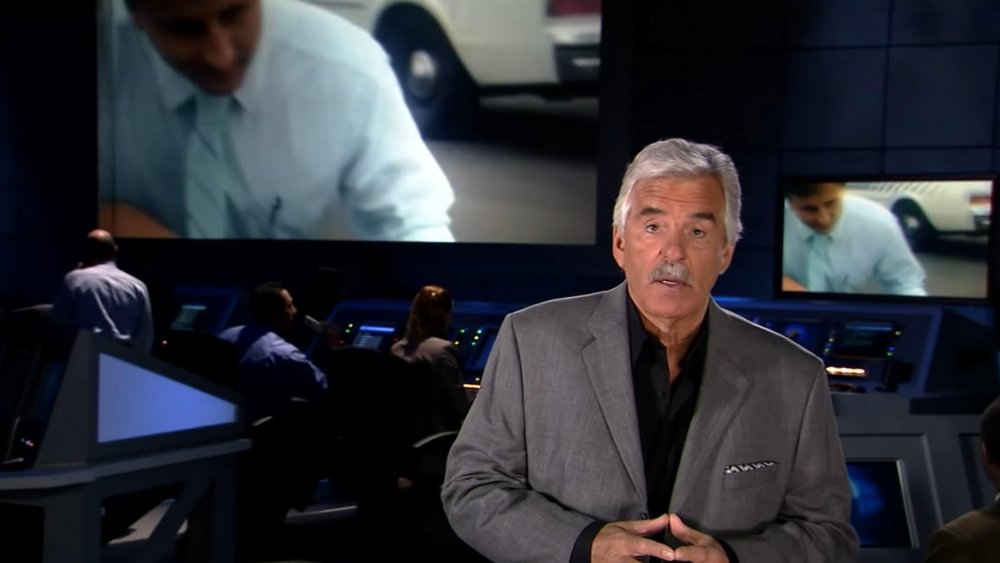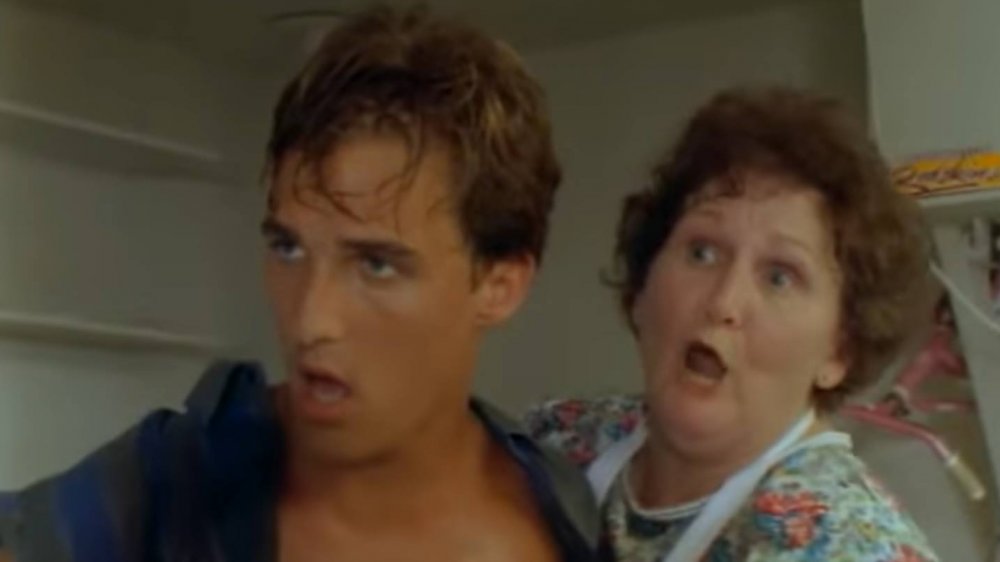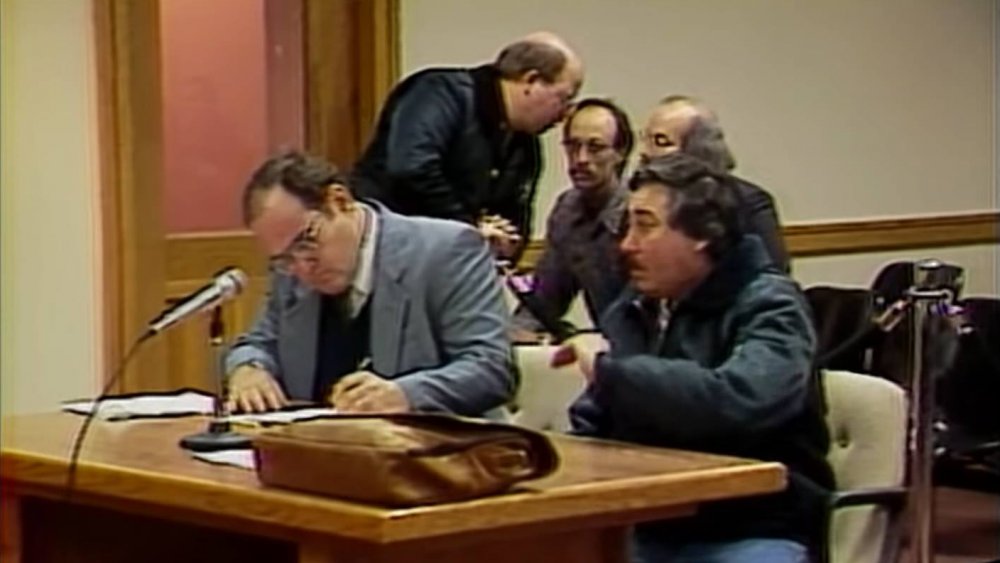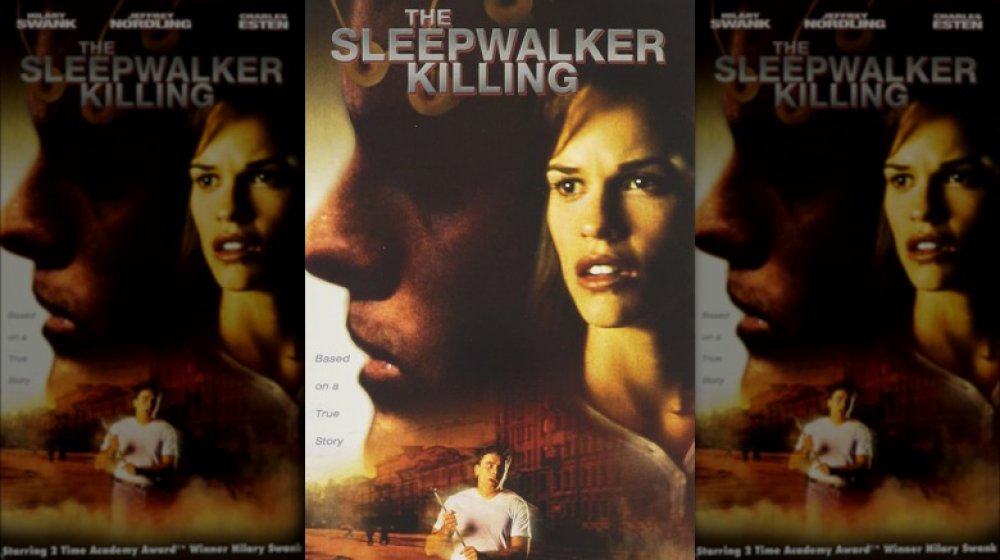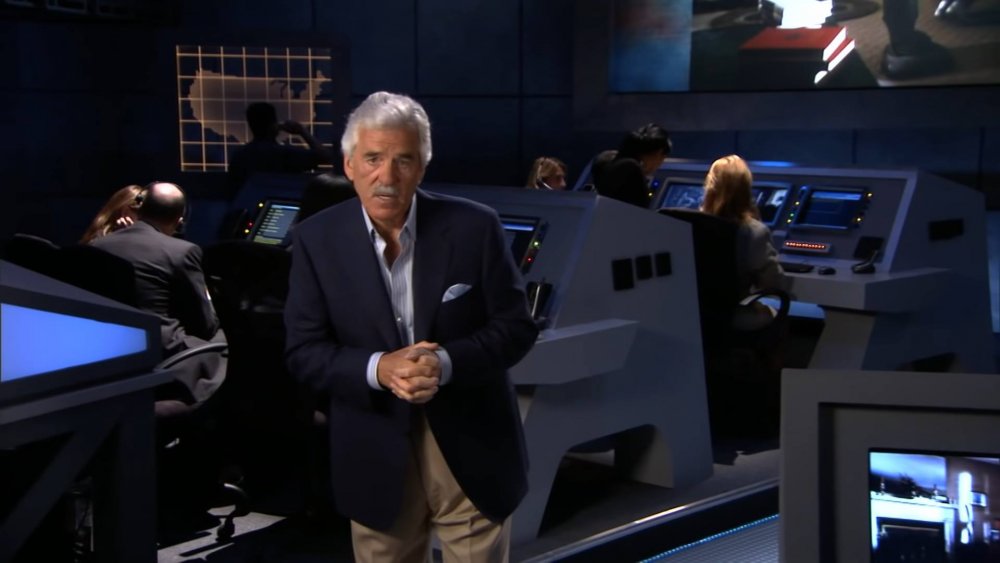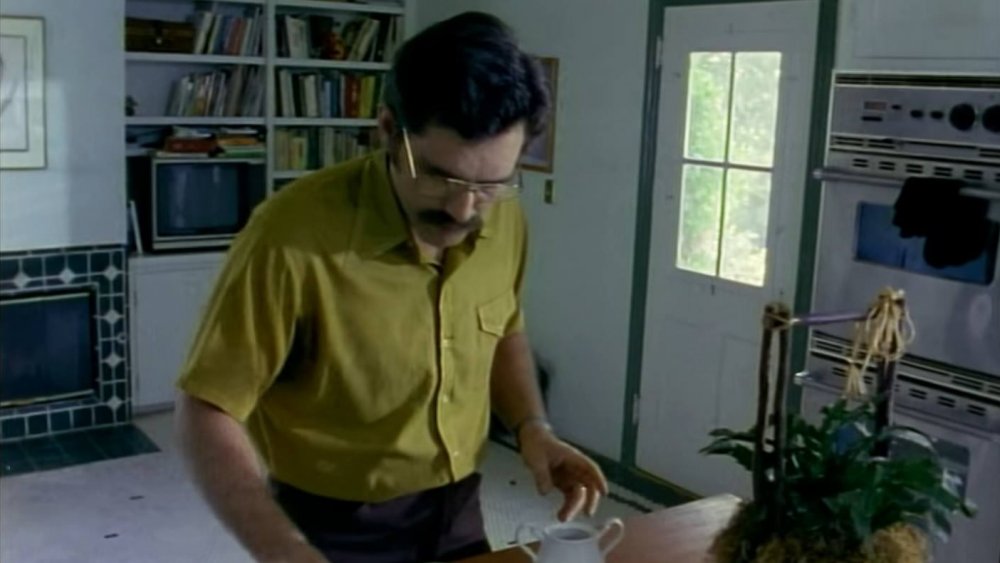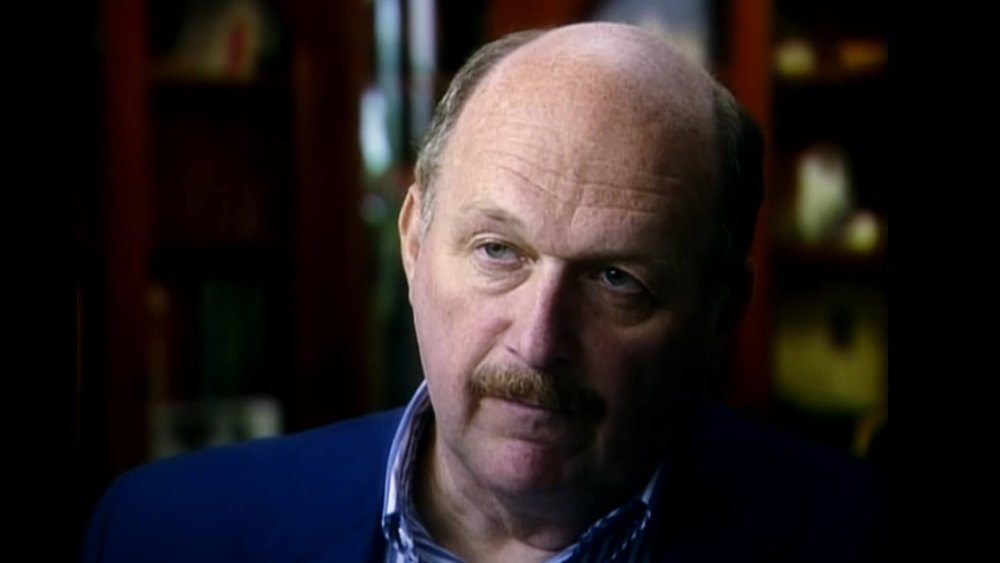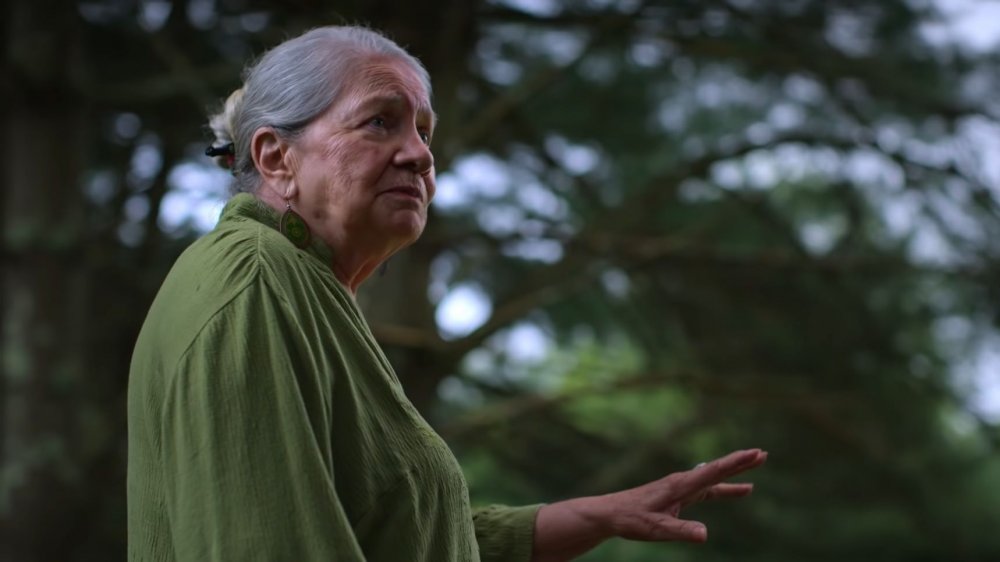The Untold Truth Of Unsolved Mysteries
True crime saw its resurgence into popular culture sometime in the early to mid-2010s. But long before audiences started listening to Serial or binging Tiger King, there was another true crime property that ruled the airwaves. And one of the pioneers of modern true crime was none other than Unsolved Mysteries. The series focused on all sorts of mysteries that had yet to be explained, be they crimes, paranormal occurrences, or tragic separations. These mysteries also included a phone line so viewers could call and give tips, which was later replaced by the show's official website.
Despite its cult following, the show faced multiple cancellations before being taken off the air in 2010. However, the show's creators were always on the lookout for new opportunities. And finally, after finding a new home on the Netflix streaming service, Unsolved Mysteries is back. But what is it that makes this series so unique? And has it actually helped to solve any crimes? Well, here's everything long-time fans and newcomers alike may want to find out about Unsolved Mysteries.
Unsolved Mysteries began as three specials
Unsolved Mysteries may now be a household name, but it came from relatively humble beginnings. The show actually started as an NBC special that began airing in 1985, titled Missing... Have You Seen This Person? and hosted by the husband and wife acting duo David Birney and Meredith Baxter. The concept wasn't too far off from Unsolved Mysteries. Over the course of the special, several cases of missing people were highlighted with the intent of bringing awareness and, hopefully, closure to the families.
The special proved to be a success and was even nominated for a Primetime Emmy in the Outstanding Informational Special category. From here, the producers decided to broaden the concept to include a more diverse offering of mysteries, ranging anywhere from missing person cases to alien conspiracies. After three installments, future specials were rebranded to the Unsolved Mysteries name in 1987. Seven Unsolved Mysteries specials were made, and they were so successful that they were turned into the weekly series we know and love in 1988.
Unsolved Mysteries has gone through multiple hosts
One of the hallmarks of the series was the inimitable Robert Stack, who acted as the show's primary host through the early 2000s. However, Stack wasn't the first Unsolved Mysteries host. That honor belongs to original Perry Mason star Raymond Burr, who hosted the pilot of the Unsolved Mysteries specials. Stage actor and Hollywood star Karl Malden replaced Burr for the next two specials, and from there, Robert Stack jumped into the fray for the rest of the specials. Once NBC greenlit Unsolved Mysteries as a series, Stack was brought on as the show's singular host.
Robert Stack would continue to act alone in his role until season 11, when Sideways actress Virginia Madsen was added as a co-host alongside Stack. Unfortunately, their partnership would be short-lived, as the series was canceled in 2002, largely due to Stack's prostate cancer diagnosis. A year later, Stack passed away from heart failure.
After the death of the legendary host, it seemed like the series was finally done for. However, in 2008, the series would once again be revived, this time by Spike TV. Taking on the enormous task of the host was character actor and former police officer Dennis Farina. Farina would continue the role until the show's eventual cancellation in 2010.
People involved with cases were used for reenactments
Before the opening theme song plays in the early episodes of the series, a prompt comes up on the screen telling viewers that they will likely not see many actors during the program. The card reads, "Whenever possible, the actual family members and police officials have participated in recreating the events."
At face value, including those involved with a case instead of trained actors may seem like an odd decision. After all, actors are paid to do what they do for a reason. Not everyone has a flair for the dramatic arts. The less altruistic and more practical reasoning is that this decision helped to save the show money, which is undoubtedly a plus for anyone working on a tight budget.
However, another reason was explained in a Reddit AMA with the series' creators John Cosgrove and Terry Dunn Meurer. According to the series creators, "One thing we realized as time went on is that when family members participated, it was a cathartic experience for them. And they felt good about doing something active to help solve the case. That was reason enough."
The series was broadcast on four networks
It's not exactly uncommon for shows to switch networks, but Unsolved Mysteries has had quite the journey over the course of its lifetime. Originating on NBC, the series began its run in 1988 and continued strong for nine seasons. Before the series switched networks in 1997, NBC aired seven specials and a total of 284 episodes.
Unsolved Mysteries found a new home on CBS, where it aired 12 new episodes. However, due to the show's dwindling ratings, the program was canceled in 1999. From here, Lifetime would pick up the show in 2001 to much greater success. Before shutting down production in 2002, a total of 103 new episodes were aired on the network. The series final host would be Spike TV, who rebooted the program in 2008. Though the series only lasted two years, Spike TV managed to pump out a respectable 175 additional episodes. After the Spike TV iteration, Unsolved Mysteries has remained off actual TV. When all is said and done, the show had a total of 580 episodes (including the specials from NBC).
With the rise of streaming services like Netflix and Hulu, it's unlikely the series will find a home on network television again anytime soon. However, with such an exciting history, Unsolved Mysteries has passed through more broadcast networks than most shows endure in a single lifetime.
Multiple stars have acted in the series
Though there was an early policy of trying to include the real people involved in each mystery during the reenactments, later seasons would turn to actors to fill in for the reenactment segments. Since the show's creators weren't looking for a star-studded cast, this opened the door to younger, less established actors, some of whom went on to become notable stars.
For his first-ever film or television role, Oscar winner Matthew McConaughey played a murder victim in a 1992 episode of Unsolved Mysteries. One of the first on-screen jobs that SNL veteran Taran Killam landed was portraying a young German boy in a 1995 episode. Before becoming known for portraying Jin-Soo Kwon on Lost, Daniel Dae Kim portrayed the brother-in-law of a murder victim on Unsolved Mysteries. Actress Cheryl Hines of Curb Your Enthusiasm appeared in a 1997 episode to portray a grieving mother. And like McConaughey, MADtv and Happy Together star Stephnie Weir also made her first television debut on the show, adding another name to the list of actors who used Unsolved Mysteries as a jumping-off point for their careers.
Unsolved Mysteries actually did solve cases
During the series run, viewers have had a hand in solving a multitude of cases. The Unsolved Mysteries official website boasts that "half the cases featuring wanted fugitives have been solved, more than 100 families have been reunited with lost loved ones, and seven individuals who were wrongly convicted of crimes have been exonerated and released." While the series aimed to entertain, the hope was always that, through audience involvement, some of these mysteries could finally be put to rest. Long time host Robert Stack told the L.A. Times, "We're balancing two needs here. We're trying to produce theater, and we're trying to do a public service."
When asked about the most memorable solved mystery in an interview with True Crime Factor, co-creator John Cosgrove recounts a case where a mother had been imprisoned for killing her daughter with antifreeze while maintaining her innocence. A biologist watched the episode and helped get the girl autopsied, only to find that she had instead died of a rare genetic disease, thus exonerating the mother.
However, some cases were solved before being broadcast. In a Reddit AMA, Cosgrove and co-creator Terry Dunn Meurer noted that, "Sometimes when our researchers would start investigating a story, they would solve the case themselves, especially a lost love type story. So those cases were abandoned before they aired." With the help of the show's tireless staff and the eager participation of audiences at home, Unsolved Mysteries is responsible for bringing closure to countless people and communities.
There was a spinoff series and three movies
Even with several cases contained in each episode, there were still incalculably more mysteries floating out in the ether, ready for some much-needed exposure. Due to the series' popularity, other properties bearing the Unsolved Mysteries name were made, further expanding the content covered under the Unsolved Mysteries umbrella. One such spinoff got the green light in 1992. The short series, titled Final Appeal: From the Files of Unsolved Mysteries, delved into the accounts of inmates who claimed that they had been falsely convicted. Like the original series, Final Appeal featured Robert Stack as its host.
But some mysteries are just too big for a short segment in a single episode. As a result, some mysterious happenings were granted an entire TV movie. This was the case for 1995's Escape from Terror: The Teresa Stamper Story, a 90-minute dramatization of the real horrors experienced by a woman trying to escape her abusive husband. Another special that focused on a single crime was Voice from the Grave, released in 1996. This made for television film focused on the case of a nurse who claimed she was possessed by the spirit of a dead coworker who then identified their murderer. The last of the significant television films was The Sleepwalker Killing. Starring Hilary Swank, the 1997 film details the case of a man who claimed he killed his parents but didn't remember doing so since he was sleepwalking the entire time.
Unsolved Mysteries was cheap to produce
One reason Unsolved Mysteries was such a success was that the series was relatively cheap to produce. To give some idea of the show's expense, producer John Cosgrove told The Baltimore Sun, "In the Heat of the Night costs about $1.5 million an episode to make. An hour-long reality show, like Unsolved Mysteries, can be made for 25 to 40 percent of that."
So how did Unsolved Mysteries manage to keep costs so low? Well, the overall production didn't necessarily rely on extravagant effects or hard-hitting action scenes. They didn't have a large budget to play around with, so the crew had to use cheap production techniques and special effects to get the job done. For example, reliance on non-actors in the show's earlier seasons took a significant strain off of the show's budget. The show's later transition to novice actors meant that the show could cut costs by avoiding stars who would likely demand a higher paycheck.
Similarly, shooting times for episodes were relatively short. Terry Dunn Meurer and John Cosgrove said in a Reddit AMA, "The actual shooting of a story would take four to five days, that would include the interview and the reenactments. The editing would take about four weeks per segment." In an interview with Channel Nonfiction, Cosgrove noted shoots mostly took place around L.A. and the Southern California area, which undoubtedly helped in keeping the costs of production low.
Unsolved Mysteries moved to YouTube
Though the show was canceled several times by several networks over the years, Unsolved Mysteries always retained a cult fanbase. An aspect that made reruns of the show interesting was that stories were always updated with the most current information. This meant that if it took ten years for a case from season one to get solved, then ten years later, that episode would notify the audience of the recent arrest. This sense of continuity helped fans follow the series as it jumped from NBC to CBS to Lifetime to Spike TV ... to YouTube.
Years after the show had aired new episodes on television, FilmRise acquired the digital distribution rights for the series in late 2016. Once 2017 rolled around, FilmRise started making full episodes of the series available across several platforms. The company began with bringing seasons hosted by Dennis Farina, who hosted during the show's run on Spike, to Amazon. Seasons hosted by Robert Stack soon followed. And on February 22, 2017, FilmRise began uploading full episodes of Unsolved Mysteries hosted by Robert Stack to YouTube. According to an interview series co-creator John Cosgrove did with True Crime Factor, he confirmed that the old episodes were being re-edited with updates on cases when needed before being made available for streaming.
The showrunners found stories and cases through tips
For a show that crammed in four different mysteries in every episode, finding new cases and leads was necessary for survival. With over 550 episodes from 1987 to 2010, the number of stories that needed to be gathered by the team at Unsolved Mysteries was staggering. In a Reddit AMA, Terry Dunn Meurer and John Cosgrove, the co-creators of the series, revealed how varied their story finding team was. "We had viewers who sent in cases, law enforcement would contact us with cases, and we had a team of researchers constantly looking as well."
They also found stories in newspapers across the country. According to the creators, "When we were producing the show, the internet didn't exist yet, so we had a newspaper clipping service that would send us articles from around the country, keying off of words like 'murder,' 'missing,' 'UFO,' 'ghost,' etc." And when it came to maintaining the most current information in ongoing cases, Cosgrove told True Crime Factor, "We have an update coordinator who keeps track of the cases and is in touch with the law enforcement people on the cases." He added that members of law enforcement who'd been featured on the series would commonly contact the show with updates when a case made new progress.
The Netflix reboot chose to forgo a host
In an effort to emulate the success of the original series, Netflix's Unsolved Mysteries reboot is being produced by Terry Dunn Meurer and John Cosgrove, the creators of the series. With the OG showrunners at the helm, as well as the attachment of Stranger Things director and executive producer Shawn Levy, Netflix has stated they aim to "maintain the chilling feeling viewers loved about the original, while also telling the stories through the lens of a premium Netflix documentary series." But while the new series encourages audiences members to help solve the cases, there are some glaring differences between the reboot and its predecessor.
Unlike the previous iterations, which showcased multiple mysteries per episode, the new series features a single mystery in each episode. Another significant change is the disposal of one of the show's defining fixtures — its host. Instead of a narrator, the series focuses solely on reenactments and interviews with eyewitnesses and family members. Regarding why the reboot lacks a host, producer Shawn Levy said (via Decider), "We have also opted for a hostless format because the late, legendary Robert Stack was a singular and irreplaceable presence." Series co-creator John Cosgrove echoed that sentiment when talking to Channel Nonfiction, saying that one of the reasons he was excited for the new series was that, "We don't have the horrible job of trying to find somebody as good as Robert Stack."
